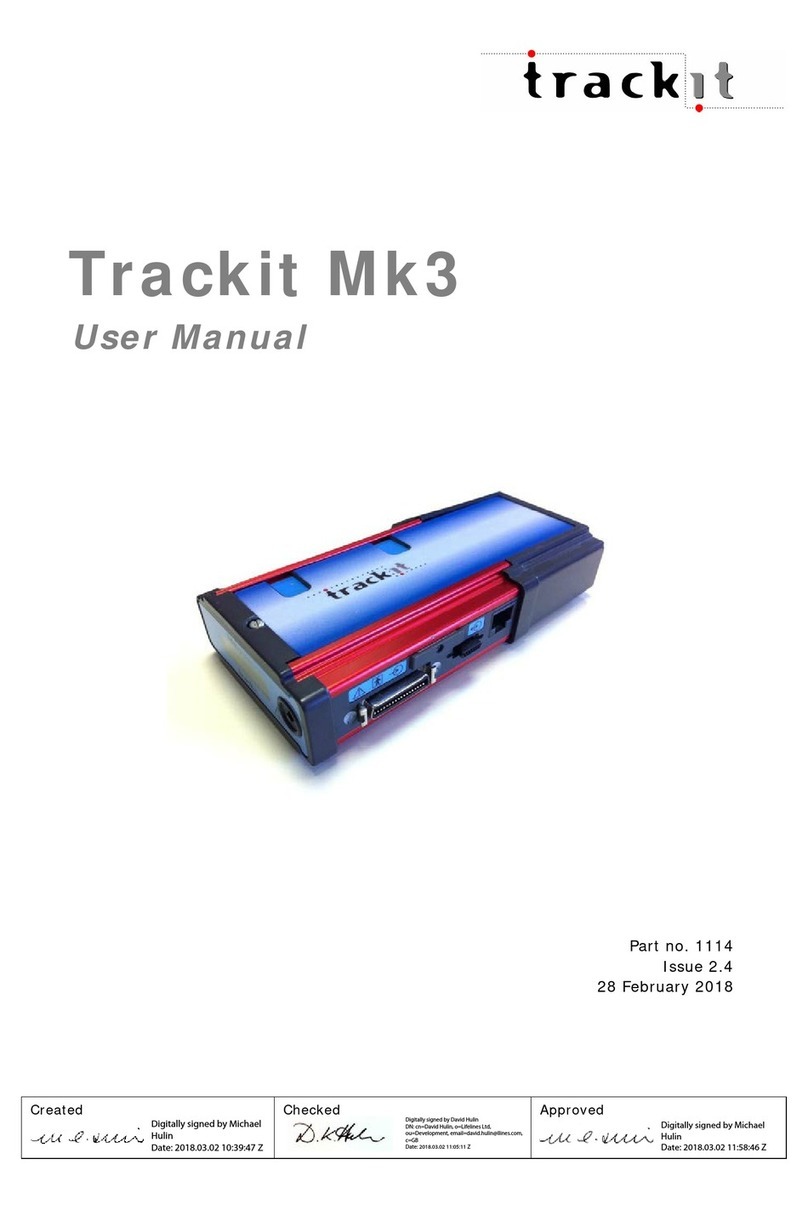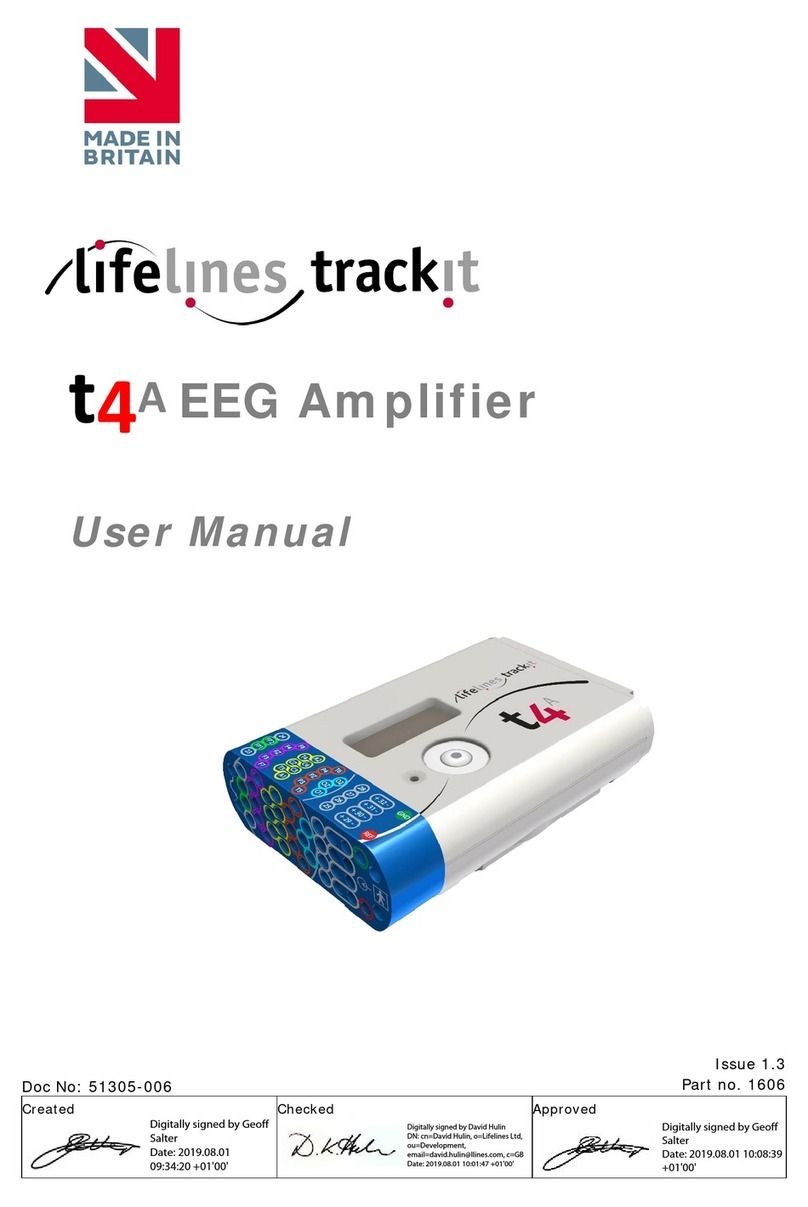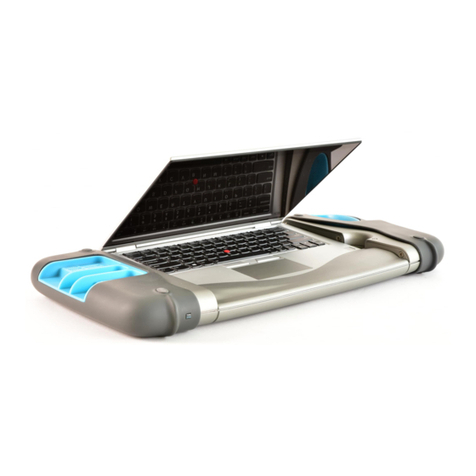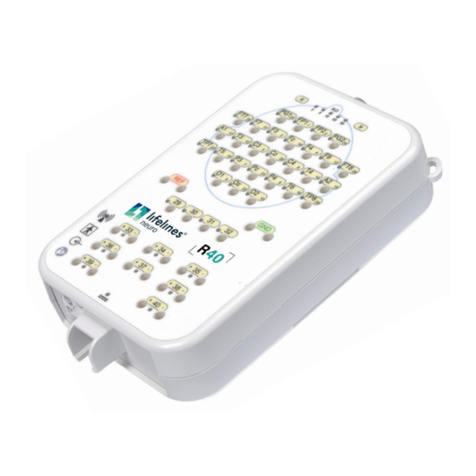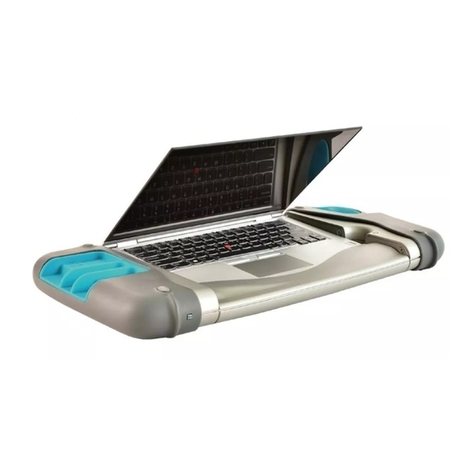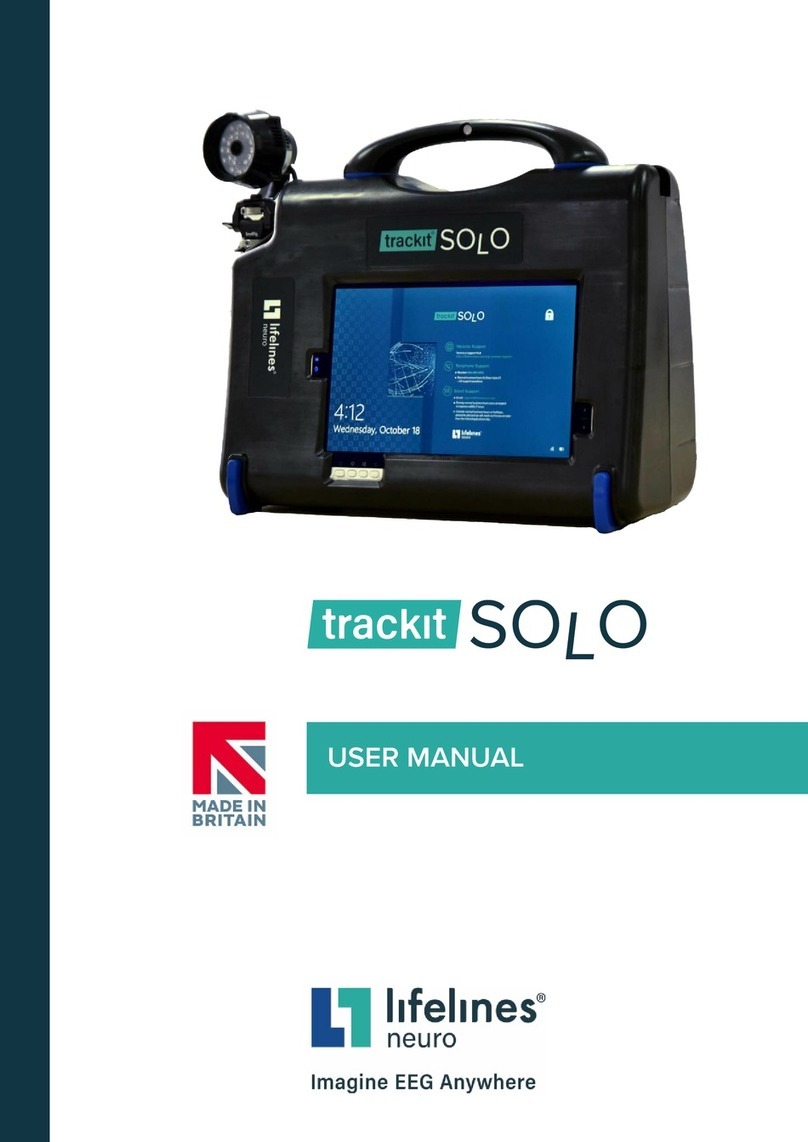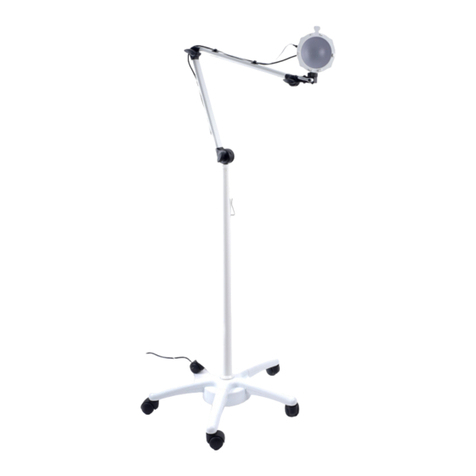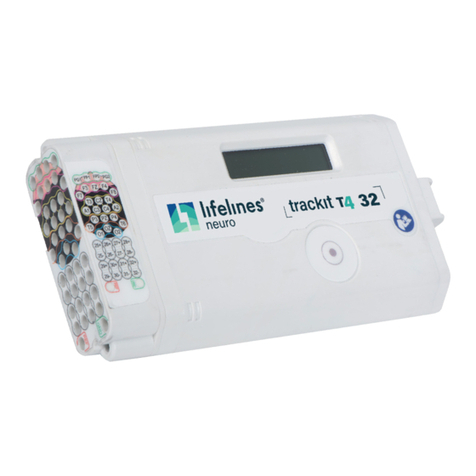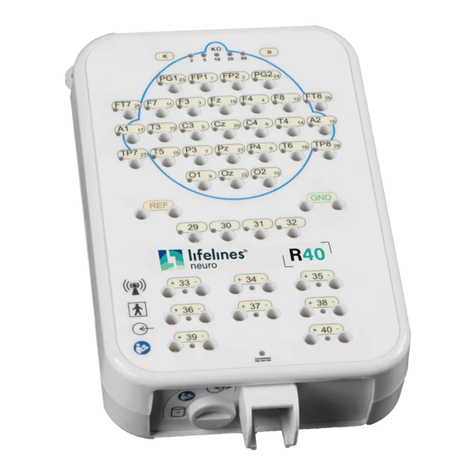
T4 EEG Amplifier User Manual
4
Disclaimers & Warranties
The information in this section is subject to change without notice.
Except as stated below, Lifelines Ltd makes no warranty of any kind with regard to this material, including, but
not limited to, the implied warranties of merchantability and fitness for a particular purpose. Lifelines shall not
be liable for errors contained herein or for incidental or consequential damages in connection with the furnish-
ing, performance or use of this material.
Lifelines shall warrant its products against all defects in material and workmanship for one year from the date
of delivery.
Misuse, accident, modification, unsuitable physical or operating environment, improper maintenance or dam-
age caused by a product for which Lifelines is not responsible will void the warranty.
Lifelines do not warrant uninterrupted or error-free operation of its products.
Lifelines or its authorised agents will repair or replace any products that prove to be defective during the war-
ranty period, provided that these products are used as prescribed in the operating instructions in the user’s
and service manuals.
No other party is authorised to make any warranty to assume liability for Lifelines products. Lifelines will not
recognise any other warranty, either implied or in writing. In addition, services performed by someone other
than Lifelines or its authorised agents or any technical modification or changes of products without Lifelines
prior, written consent may be cause for voiding this warranty.
Defective products or parts must be returned to Lifelines or its authorised agents, along with an explanation of
the failure. Shipping costs must be prepaid.
Lifelines Ltd. manufactures hardware and software to be used on or with standard PC-compatible computers
and operating software. Lifelines, however, assumes no responsibility for the use or reliability of its software or
hardware with equipment that is not furnished by third-party manufacturers accepted by Lifelines at the date
of purchase.
All warranties for third-party products used within the T4 system are the responsibility of the relevant manu-
facturer. Please refer to the relevant documentation on each product for further details.
This document contains proprietary information that is protected by copyright. All rights are reserved. No part
of this document may be photocopied, reproduced in any other form or translated into another language with-
out the prior written consent of Lifelines.
Trademarks
Microsoft, Windows and Windows NT are registered trademarks of the Microsoft Corporation. All other trade-
marks and product names are the property of their relevant owners.
Responsibility of manufacturer
The manufacturer and distributor consider themselves responsible for the equipment’s safety, reliability and
performance only if:
•any peripheral equipment to be used with the T4 system is supplied by third-party providers recom-
mended by the manufacturer;
•assembly operations, extensions, readjustments, modifications, or repairs are carried out by persons
authorised by the manufacturer;
•the electrical installation of the relevant room complies with the appropriate requirements;
•the equipment is used by a health-care professional and in accordance with the instructions for use.
Note: the manufacturer has a policy of continual product improvement; hence the equipment specifications
are subject to change without notice.
Check with Lifelines or your distributor if a software update is available.
Note: Medical electrical equipment needs special precautions regarding EMC and needs to be installed and put
into service according to the EMC information provided in the Appendix.
